This is part 3 of a 7-part series on Holland (The Netherlands), including traveling to Holland, the Dutch culture, Dutch lifestyle, Dutch environment and essential things to know about the country.
- Part 1: Introduction & Basic Information about Holland
- Part 2: Traveling to Holland: Visa Preparation and Climate
- Part 3: The Dutch Culture, Part 1
- Part 4: The Dutch Culture, Part 2
- Part 5: Living in Holland: Cost of Living and Hobbies
- Part 6: Traveling in Holland: Land of Bicycles, Public Transport and Going to Other EU Countries
- Part 7: 22 Random Facts About Holland
Thoughts on the Dutch Culture
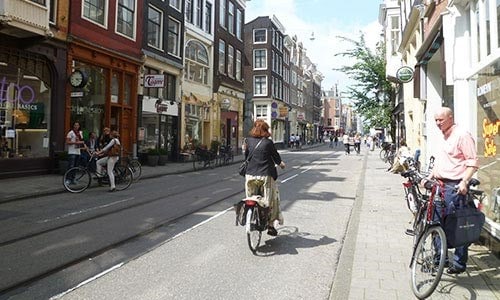
This is the Utrechtsestraat lane, at Amsterdam. It’s a lane of shophouses, including cafes, clothing stores, bookstores, etc.
I appreciate the Dutch culture, and in fact, find quite a few similarities with the Asian/Singapore culture. Before my trip, one of my friends told me the European culture has more similarities with Asian culture than American culture with Asian culture, and I do agree with her.
On the surface, there are elements of Dutch culture that sets it apart from Asia. Firstly, their greeting is more liberal – cheek kissing, 3 times, for friends or even acquaintances. Secondly, a more direct and open communication style is adopted in the professional setting, unlike in Asia where silent agreement and instruction taking is more appreciated. Thirdly, they have a more liberal attitude towards normally taboo topics, like sex, drugs, and LGBT (lesbians, gays, bisexuals, and transgenders). Fourthly, kids move out of their home when they reach 18, compared to Asia where children continue to live with parents till they get married.
But underneath that, I found the “soft” elements of the culture are quite similar with Asians, if not totally similar. For example, quiet humility is very important. Community/togetherness is highly valued – to the extent where shops are not allowed to open later than 10 pm (and Sundays in some cities), so that people get time with their family and friends. Dutch people are also very private, usually sticking to the same circle of friends, rather than venturing out to make new connections. Face-saving is also important – Unlike what I’ve heard, the Dutch are not direct when it comes to communication in off-work settings. Also, the Dutch are very thrifty, just like Asians.
Beyond these similarities, there are some notable distinctions in values. Firstly, the Dutch prioritize work-life balance and wellness very highly. This ripples out to operating hours of shops, which are required to close by 10 pm latest every day. Most stores close at about 8 pm. On Sundays, stores may not even open. Most people in the corporate environment end work at about 6-7pm latest (unless you work in an MNC that’s driven by a foreign culture).
On the other hand, in Asia, work/career/financial success tends to be the single, top-most priority, at the expense of personal rest. Most people work way past 7 pm every day. It’s not uncommon to hear people working into the night or over the weekend. Climbing the corporate ladder, or achieving career success, is a primary objective of many.
Secondly, consumerism and materialism in Holland are nowhere like that in Singapore/Hong Kong/Japan. In the latter countries, shopping is a hobby. In Holland, unnecessary spending is seen as a vice. (I believe this is changing though with the younger generation.)
Thirdly, it’s important to blend in, and not stand out too much in Holland, due to Calvinism (the theological system in the country). They do not like to draw attention to themselves, be it to their accomplishments, or their wealth. Hence, there may be times when they reject opportunities. Whereas in Singapore, where it’s a very meritocratic environment, people want to stand out for their achievements and success. This may be via receiving promotions, achieving awards, being featured in the media, purchasing material goods, owning luxurious property and extravagant cars, and so on.
Here, I’ll go into detail on each aspect of the Dutch culture, and draw comparisons with Singapore/Asia since that’s where I’m from. Note that this is intended as an overall comparison – there’ll definitely be differences from person to person. Whether you’re planning to travel to Holland or you want to get some insights on the Dutch culture, you may find this helpful. :D
Greetings
Cheek kissing is the norm in greeting friends in Holland. If you’re open enough, you can also do it for people you’re meeting for the first time. The cheek kiss is done three times: Starting with your right cheek, then left, then right. This is also done when bidding farewell. The exchange occurs between females/females and females/males, but not males/males – they just shake hands. ;)
I had a fun time doing this with every new person I met in the past week! Though hellos/farewells can take quite long when you’re in a big group – For example, last Wed I was on a movie outing with 7-8 friends, and it took several minutes before all of us were done with our farewells since each cheek kiss greeting takes about 20 seconds! Another funny situation is when greeting guys with facial stubble – you get pricked by their stubble! :lol:
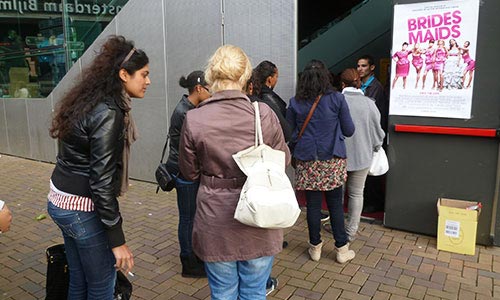
Movie date – Was out watching Bridesmaids with a group of girlfriends last week
This is different from Asia/Singapore. People tend to value personal space in Singapore (and generally Asia). Greetings are limited to verbal exchanges or handshakes. For very close friends, hugs are acceptable. If you try to lean in for a cheek kiss, we will probably get startled and see it as an invasion of personal space. :D
That said, Singaporeans are increasingly westernized nowadays, so people are now more accepting of western forms of greeting. The older generation remains more traditional.
Thriftiness / Non-consumerism / Non-materialism
You know the famous phrase, “Go Dutch”? It refers to an agreement where each party pays for his/her own expenses during a date/outing. The reason why it’s named as such is that the Dutch are known for their thriftiness. Being extravagant is not a norm here!
From the wiki page on Dutch customs and etiquette:
The Dutch have an aversion to the nonessential. Ostentatious behaviour is to be avoided. Accumulating money is fine, but spending money is considered something of a vice and associated by some people with being a show-off. A high style is considered wasteful and suspect with most people.
This is most definitely true. Not only are the Dutch thrifty, they are also not big in consumerism (a desire to buy more goods and services; buying for the sake of buying) nor materialism (a lust for material possessions). People spend if they feel the need to, but they do not buy for the sake of buying nor do they spend excessively.
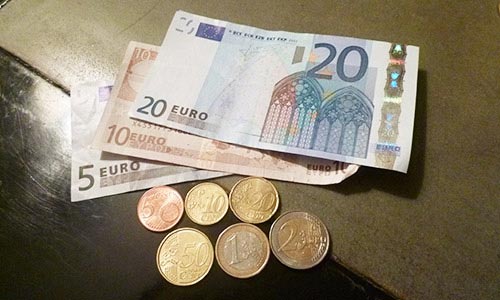
The Euro – Official currency of the eurozone, and currency used in Holland
In comparison, Singaporeans are thrifty too. Every true blue Singaporean has a savings account, and most people make a point to save a certain percentage or $x of what they earn every month.
However, Singapore as a whole has a heavy buying mentality, especially the younger generation. Regular spending on clothes, self-indulgent activities, good food, new mobile phone, new camera, latest tools, etc. is considered to be progressive and productive actions, even though they are non-essential expenditures.
Singapore is also quite a materialistic society, where brand names, property sizes, car models, etc are important to people. Girls are materialistic about clothes, shoes, accessories, and what they expect of a boyfriend. It’s not uncommon for girls to own or long for a branded item from Prada, Louis Vuitton, Chanel, Balenciaga, Tiffany, and so on. Guys are materialistic when it comes to cars, property and wealth. (I don’t care much about brands and I’m sure there are many who don’t as well, but here we are talking about societal norms.)
Example: Functional cars vs. Extravagant ones
As an example, in the 1-2 weeks I’m here in Holland, I’ve only seen a few high-end cars on the roads, and even then they’re not the most extravagant kind. Most cars I’ve seen are regular 4 seaters, family cars, and in some cases, 2-seater Smart cars. Which is a surprise because I’m staying in Amsterdam, considered one of the wealthier cities in Holland, and the place I’m staying at is considered a wealthier district in Amsterdam.
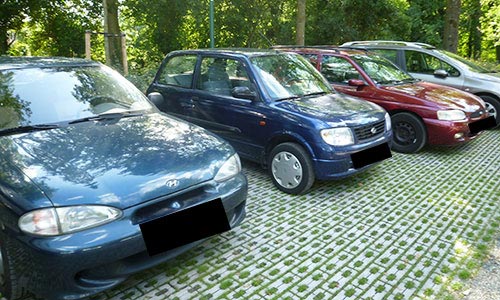
Typical cars you’ll find all over Holland. Here, I’m in Bunnik, a village in Utrecht.
This is quite a contrast compared to Singapore, where it’s not unusual to see very extravagant cars like Lamborghinis, Ferraris, Lotus, and what have you speeding down the short distance between one traffic light and the next, while blasting their sound system at the loudest (especially in Orchard Road). People aspire to own such vehicles because they equate success.
Example: Shopping as Essential vs. Frivolous Expenditure
Another example is the shopping industry. In Singapore (and Hong Kong), shopping is a favorite past time. Shopping malls are everywhere. In Orchard Road which is the busiest part of the country, there are multiple, large shopping malls, each with at least 5 stories and above. Each story is lined up with clothing stores, shoe shops, and cosmetic stores. Many malls house the same brands, despite them being 10-minute walks away from one another!
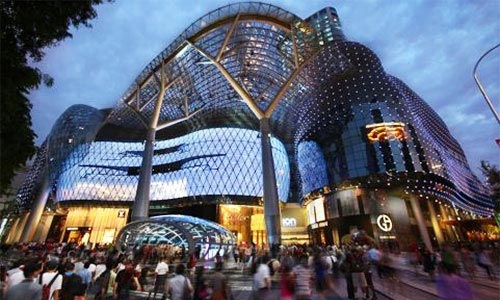
Ion Orchard, one of the largest shopping mall in Singapore (Image)
In comparison, shopping doesn’t seem like a large part of the Dutch culture. There are certainly dutch people who enjoy shopping I’m sure, but it’s just not as prevalent in Holland as say, in Singapore. Their shopping districts like Kalverstraat (in Amsterdam Central) and Leidseplein are quite toned down compared to Singapore’s Ion or Paragon, or Hong Kong’s Times Square or Lane Crawford.
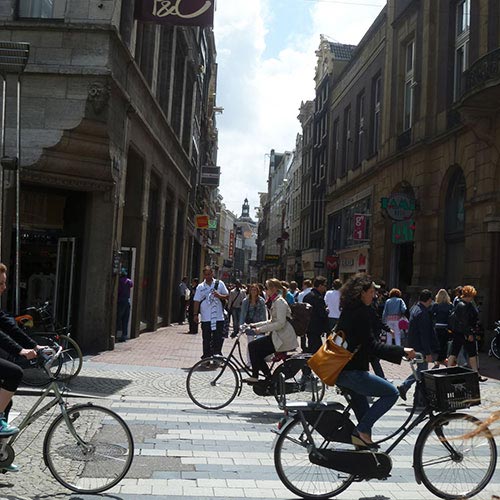
This is Kalverstraat, a shopping district in Amsterdam
Clothing seems to be a more functional need among Dutch than anything – Most people here wear a simple t-shirt and jeans, with a waterproof jacket during the chilly periods.
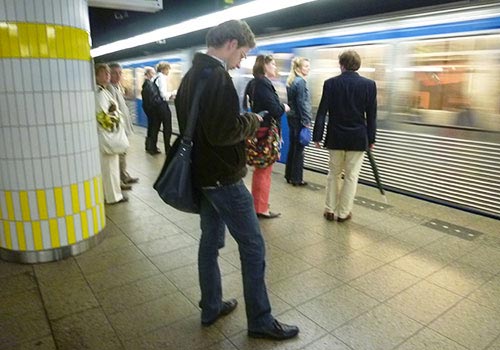
Commuters in Amsterdam
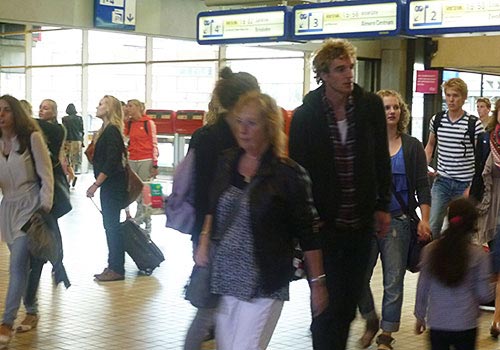
More commuters at Utrecht Central station. Notice everyone’s clothing – mainly simple shirt, jeans and a sweater. Or a suit for those working. You see this everywhere, even in Amsterdam.
Rather than shop, I got the sense that Dutch spend their time pursuing other interests, such as spending time with family, hanging out with friends, sea sports, traveling, cycling, gardening, taking care of their pets, and so on. (More in part-5 of the series on lifestyle.)
On that note, materialism seems a lot more prevalent in the American culture (and Asian countries that are heavily influenced by the American culture, such as Singapore and Hong Kong). While I’m not saying materialism originated in America (I think it can be found everywhere), a lot of messages that Hollywood and American media does inadvertently contribute to this phenomenon.
Calvinism – Quiet Humility
A prevalent, underlying philosophy of life among the Dutch is Calvinism. Calvinism is a philosophy whereby:
- One should not draw unnecessary attention to him/herself. He/she should strive to be a part of the community as much as possible. To stand out is to be egoistic, to be a show-off, to be a snob, all of which are frowned upon by the Dutch. Meaning it’s better to blend in than to stand out.
- One should practice quiet humility about his/her achievements, and not speak/draw attention to them. Accept recognition where given, but don’t invite attention to them. For example, my client has been invited to have his own TV show before, but he rejected as it would be seen as being too ostentatious.
- #2 extends to the amount of wealth you have too. Even if you have a lot of money, you should not engage in materialism or show off your wealth. Save and put it to a better use.
To violate the above would be seen as unDutch-like. From Wiki:
Dutch society is egalitarian, individualistic and modern. The people tend to view themselves as modest, tolerant, independent and self-reliant. They value education, tolerance, hard work, ambition and ability.
I have a few friends in Holland who are very successful and well-to-do. A couple is highly influential (they’ve been interviewed on TV/radio before) and owners of sizable corporations.
However, they present themselves no different than anyone else. They wear simple t-shirt and jeans; they ride bicycles like everyone here; they are approachable and down-to-earth; they don’t draw attention to themselves nor their achievements. If you didn’t know them, you would not have guessed what they are doing!
This is something that’s very much in line with the Asian culture. In Asia, it’s important to be humble and not brag about your accomplishments and wealth.
However, in Singapore, people have no problems displaying one’s success implicitly through symbols, such as material possessions. For example, people like to buy BMWs and Mercedes (or other luxury cars) as symbols of wealth and success. Owning larger, luxurious property is also an aspiration for many.
Dominance of Dutch Language
The primary language here is Dutch. Everyone here speaks Dutch to one another; instructions and street posters are in Dutch, train/bus schedules are in Dutch; most TV programs are in Dutch (save for the international syndicated programs), restaurant menus are in Dutch, magazines and books are in Dutch! Even on KLM airlines (the airline I took from Singapore to Holland), the instructions are first broadcast in Dutch, then English. Wherever you go, people will automatically speak to you in Dutch.
One of my Dutch friends I stayed with during my first week has a 3-year-old baby daughter. Only Dutch is spoken in her daughter’s daycare. As a result, we had some serious language barrier issues – her daughter would speak to me in Dutch, while I could only reply in some self-created baby language, hoping that she could understand me! I guess at the end of the day, peek-a-boo, hide-and-seek and tickling games are universal for kids. :D
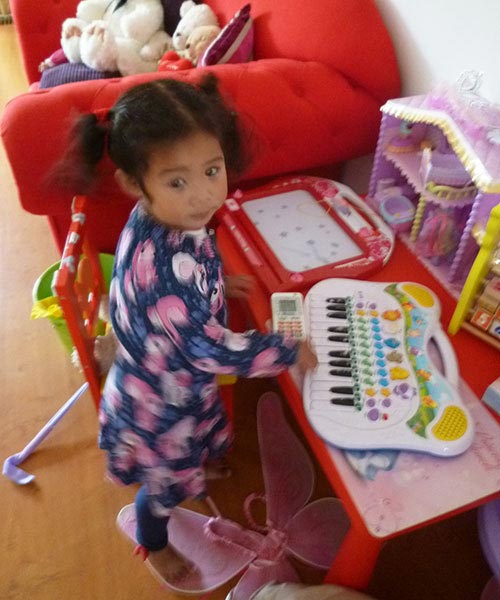
Playing with my friend’s 3-year old daughter, Louisa (She’s of Indonesian descent). This is their lovely home in Hoofddorp and my home for my first few days in Holland.
Does this mean people don’t know English? No, not at all – Most people understand English. In fact, their command of English is quite good, probably the best in Europe (other than the UK). They start learning English in primary school here. If you speak English to a passerby or to an assistant in a shop, chances are he/she will know English. I was told this isn’t the case in countries like Paris or Italy. Occasionally you’ll run into someone in Holland who can’t understand English, for example, the man in the ice cream truck or owner of a small town restaurant (usually the older generation), but it’s not common.
But the use of Dutch as the official language presents difficulties for a foreigner who doesn’t know Dutch. For example, even though I can ask for translations for menu items in a restaurant, I can’t possibly do that for every single item. This is important for people with dietary restrictions. In the supermarket, I have difficulty identifying the ingredients since everything is in Dutch (pictures can only tell you so much)!
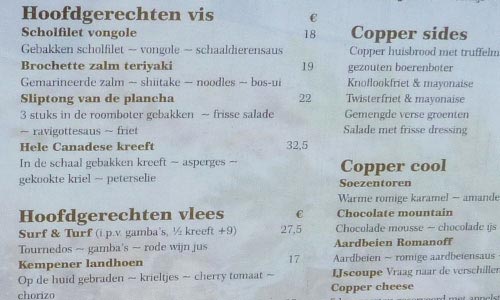
Example of a restaurant menu. Surprisingly, many restaurants do not have English menus. Some words you can guess, but most you can’t. Combine that with no pictures, and you can see how it soon becomes a frustrating experience.
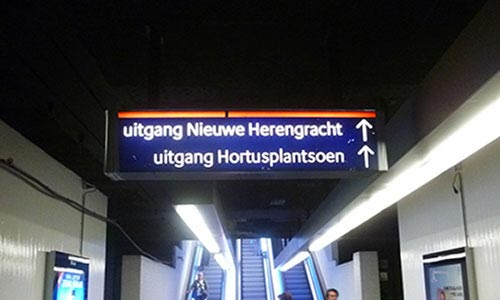
Metro instructions are in Dutch too, though here it’s quite straightforward
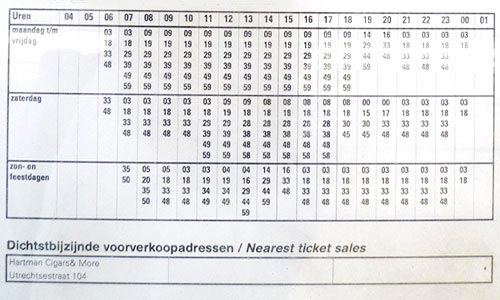
Tram schedule for one of the trams, taken at a bus stop. I know the meaning of the Dutch words now, though I didn’t when I first saw them. (Uren = Hour; Maandag t/m vrijdag = Monday to Friday; Zaterdag = Saturday, Zon- en Feestdagen = Sunday and Public Holidays)
A few days ago, I was out trying to buy conditioner in the hair care section but I couldn’t read the labels (Volumizing? Hair fall control? Anti-frizz? Anti-dandruff? They were all alien to me). In the end I got a random bottle, but I have no idea what it does other than it being a conditioner!
The difficulty extends to most basic of things, like taking the train. The railway system isn’t as straightforward as in Singapore. Trains on the same platform can be departing to different places. However, there are barely any instructions to guide you, and whatever’s available is in Dutch. If I didn’t have my Dutch friends to guide me at first, I would never have figured it out by myself!
So in short, if you want to tour in Holland, knowing English is sufficient. However, if you’re planning to stay in Holland for prolonged period, possibly even migrate here, then learning Dutch will be important to assimilate with the locals. A suitable command in the Dutch language is needed to become a Dutch resident or citizen (Refer to Dutch Nationality Law).
Next part of the series is now up! Holland Travel Series: The Dutch Culture, Part 2
This is part 3 of a 7-part series on Holland (The Netherlands), including traveling to Holland, the Dutch culture, Dutch lifestyle, Dutch environment and essential things to know about the country.
- Part 1: Introduction & Basic Information about Holland
- Part 2: Traveling to Holland: Visa Preparation and Climate
- Part 3: The Dutch Culture, Part 1
- Part 4: The Dutch Culture, Part 2
- Part 5: Living in Holland: Cost of Living and Hobbies
- Part 6: Traveling in Holland: Land of Bicycles, Public Transport and Going to Other EU Countries
- Part 7: 22 Random Facts About Holland
(Images: Personal Excellence)







 If you like my articles, join my community of 65,000 readers and get my latest articles delivered to your inbox. Your email is safe. 100% no spam.
If you like my articles, join my community of 65,000 readers and get my latest articles delivered to your inbox. Your email is safe. 100% no spam.
I like the example of functional cars vs. extravagant ones. Does cars really equate success. I think people get it all wrong when they define material things as been successful. Success is more of who you are. I believe the cars are just a by-product of success. Though, i want to own a yatch and drive a Ferraris. Guess that’s not too tall a dream?
Cheers.
Hello Celes,
I am an Indian and it is very enlightening to learn from you about ‘Calvinism’ as part of Dutch people’s life. The interesting thing about middle class life in India is, we are all taught, that it is not appropriate to display one’s success and always be humble about achievements and so on. (very similar to the philosophy of Calvinism). Having said that, some where in life during the struggle and the hard work we tend to get lost and make these as our focal points for measuring success. I think, the difference is in discipline and faith.
But, honestly it is so divine to read your feelings and be guided by your purity, i have no one else to thank but God and you. Bless you.
Regards
Aw thank you Parikshit! :D That’s very sweet of you. I love that no matter what culture we’re in, humility is always a common universal value that connects all of us.
Dutch 15 year old here! I agree with you in most aspects, especially the calvinism, but I think there is consumerism in The Netherlands. I haven’t been to America or Singapore so I can’t draw comparisons, but I don’t find us to be non-materialistic, (I don’t know whether that is a word but you’ll understand me).
It is true that most people walk around in jeans and t-shirts, but there are many girls who see shopping as their hobby – I actually know dozens of girls of my age that spend a great many money on those jeans and t-shirts! There are many girls my age who buy for the sake of buying and I must admit that my generation is into materialism – I’m like the only one who doesn’t have an iPhone, Blackberry or other kind of smartphone. Teenage girls here long for branded goods as well – my sister is dreaming about a Louis Vuitton or Chanel bag and so are many girls our age. I guess you will find less consumerism among adults, but the teenagers can be quite materialistic.
Hey Mirthe, thanks so much for sharing this! It helps to have a viewpoint from someone who is in the Dutch community him/herself. On an overall basis, the society in Singapore does come across as more materialistic than the Dutch society (based on what I observe). But I definitely agree with you that it does seem that the situation with consumerism/materialism in Holland seems to be changing with the younger generation. I’ve spoken to a few dutch people from different age groups, and it seems like the sentiments toward material goods is a somewhat stronger with the younger group.
Wow, the comments box is back! No more redirecting people to the forum Celes?
Anyway, informative article you’ve posted here. I had no idea about Calvinism, but it makes sense. An interesting comparison to Singapore as well.
Hey Glenn! :) Nope, just for the travel series only, as I gather the Dutch readers or those who have had exposure to the Dutch culture may have other insights to share too, as a value-add to the article/series. Thanks a lot for your comments! :)
Commenting for this post is closed.